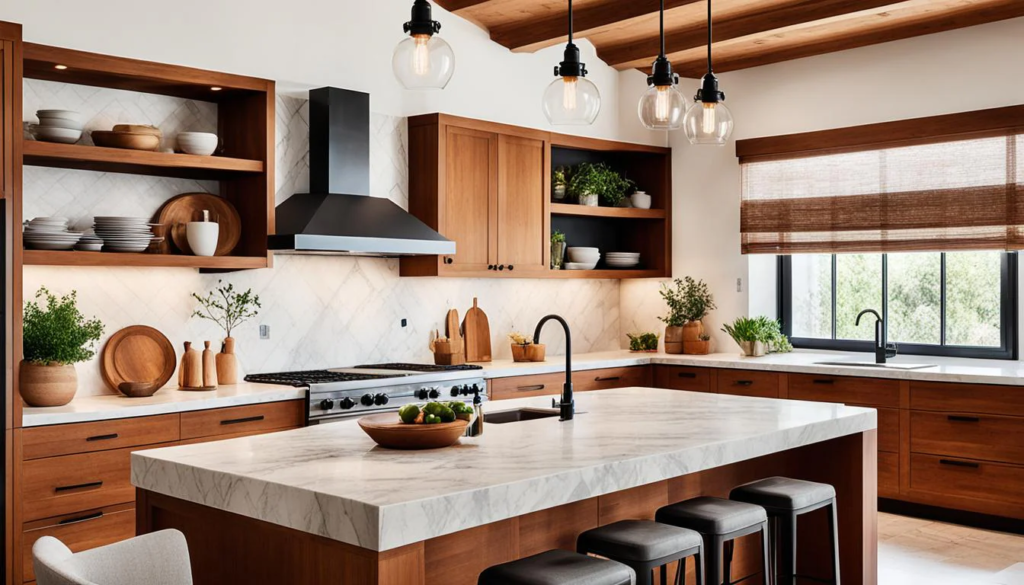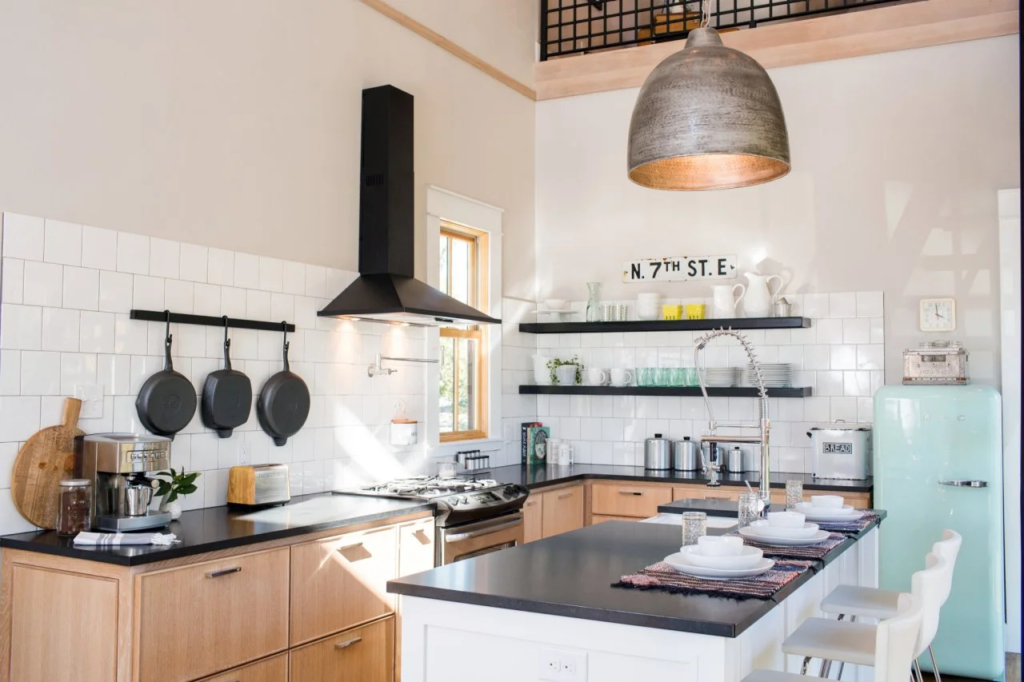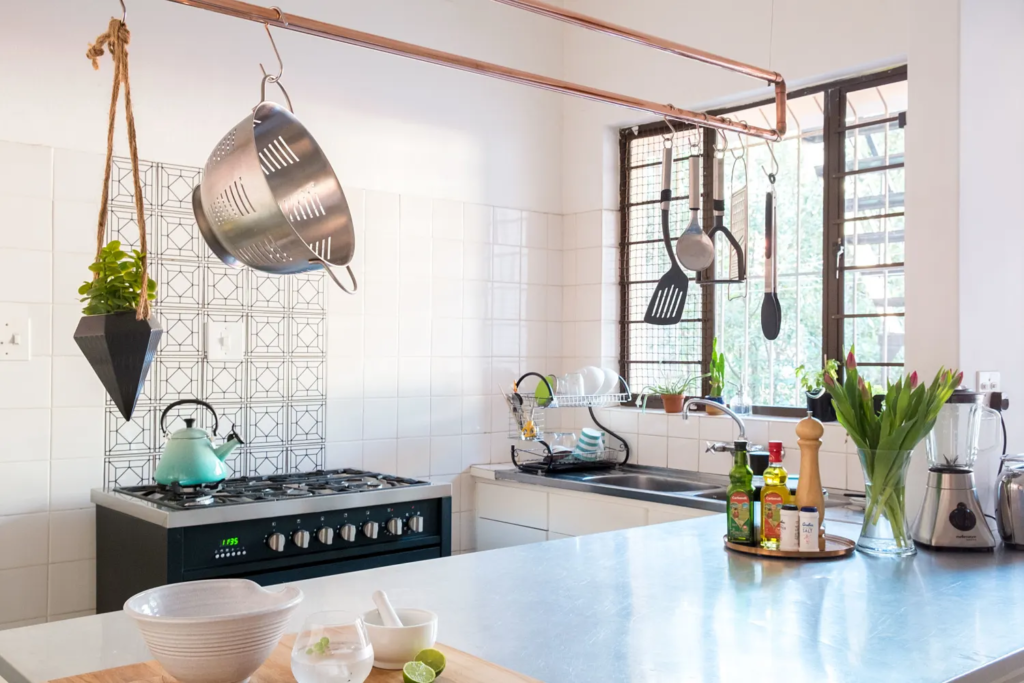European-Inspired Kitchen Is Cozy, Welcoming, and Features Smart Storage Solutions
In recent years, European-inspired kitchens have captured the hearts of American homeowners seeking both functionality and aesthetic charm. If you’re looking to transform your kitchen into a space that feels both cozy and sophisticated, drawing inspiration from European design principles might be exactly what you need. European kitchens are renowned for their warmth, practicality, and ingenious storage solutions that maximize every square inch of space. According to a survey by the National Kitchen and Bath Association, European-inspired designs account for nearly 30% of kitchen remodels in the US market, a testament to their growing popularity.
In this article, we’ll explore how you can create a European-inspired kitchen that combines old-world charm with modern conveniences, focusing on creating a welcoming atmosphere while incorporating clever storage solutions that help reduce clutter and enhance functionality.
The Hallmarks of European Kitchen Design
European kitchens vary widely across different countries and regions, but they share common elements that distinguish them from typical American designs. Understanding these core principles will help you create an authentic European feel in your kitchen space.
Warm and Inviting Aesthetics
The European approach to kitchen design prioritizes creating a warm, lived-in atmosphere that invites family and friends to gather. Unlike the stark, minimalist trend that dominated American kitchens for years, European-inspired spaces embrace a certain coziness.
“European kitchens are designed as the heart of the home, a place not just for cooking but for living,” explains Maria Costello, interior designer and European kitchen specialist. “They’re meant to feel welcoming and comfortable, with an emphasis on natural materials and personal touches.”
To achieve this inviting ambiance in your own kitchen, consider:
- Natural materials: Incorporate wood, stone, and terracotta to add warmth and texture. Wooden beams, stone flooring, and handmade tiles all contribute to the authentic European feel.
- Warm color palettes: Soft, muted colors like sage green, terracotta, warm whites, and creamy neutrals create a cozy atmosphere. Even in more modern European designs, colors tend to be warmer than the cool grays and whites common in American kitchens.
- Visible cookware: Rather than hiding everything away, European kitchens often display copper pots, ceramic dishes, and cooking implements, making the space feel lived-in and functional.
- Aged and imperfect finishes: Embrace patina and character in cabinets, countertops, and fixtures. Distressed finishes, hand-painted details, and signs of wear add to the charm of European-inspired spaces.
Focus on Functionality and Practical Storage
While aesthetics are important, European kitchens are fundamentally practical spaces designed for everyday use. This practicality manifests most clearly in their innovative storage solutions, which make efficient use of available space.
According to the U.S. Department of Housing and Urban Development (HUD), the average American kitchen wastes up to 30% of its potential storage space due to inefficient design choices. European kitchen design principles can help you reclaim this wasted space while maintaining a clutter-free environment. For more information on efficient kitchen design, you can visit the HUD website.
Some signature European storage solutions include:
- Floor-to-ceiling cabinetry: Maximize vertical space by extending cabinets all the way to the ceiling, a common feature in space-conscious European homes.
- Pull-out pantry systems: Narrow pull-out pantries can fit in otherwise unusable spaces between appliances or cabinets.
- Custom cabinet interiors: European cabinets often feature specialized dividers, pull-out shelves, and organizational systems tailored to specific storage needs.
- Open shelving: Strategically placed open shelves provide easy access to everyday items while displaying decorative pieces.
- Integrated appliances: European kitchens frequently incorporate appliances into cabinetry for a seamless look that reduces visual clutter.

Regional European Kitchen Styles to Draw Inspiration From
European kitchen design isn’t monolithic—different regions have developed distinct styles based on local traditions, materials, and lifestyles. Understanding these regional differences can help you choose elements that resonate with your personal taste.
Tuscan and Mediterranean Kitchens
Tuscan and Mediterranean-inspired kitchens capture the sun-drenched warmth of southern Europe, with an emphasis on natural materials and rustic charm.
Key features include:
- Terracotta floors and vibrant tile work
- Stone or plaster walls with visible texture
- Arched doorways and windows
- Iron accents and fixtures
- Wooden ceiling beams
- Farmhouse sinks, often in copper or stone
- Rich, warm colors inspired by the landscape
These kitchens excel at creating a cozy, gathering-friendly atmosphere that encourages lingering conversations over home-cooked meals. The storage solutions tend to include antique-inspired pantry cabinets, open shelving for display, and large islands that double as work and dining spaces.
Scandinavian-Inspired Kitchens
At the other end of the European design spectrum are Scandinavian kitchens, which emphasize clean lines, light colors, and efficient use of space.
Defining characteristics include:
- Light wood finishes (oak, ash, or pine)
- White or very light neutral color palettes
- Minimal upper cabinetry, often replaced with open shelving
- Clean lines and absence of ornate details
- Clever, hidden storage solutions
- Natural light maximization
- Functional layouts prioritizing workflow
Scandinavian kitchens are particularly renowned for their innovative storage solutions, which help maintain the clean, uncluttered aesthetic that defines this style. Pull-out drawers with custom organizers, vertical dividers for baking sheets, and specialized cabinet inserts maximize functionality without sacrificing style.
French Country Kitchens
French country kitchens strike a balance between rustic charm and refined elegance, creating spaces that feel both sophisticated and lived-in.
Distinctive elements include:
- Soft, muted colors with occasional pops of French blue or yellow
- Furniture-style cabinetry with detailed molding
- Mixed materials (wood, stone, marble)
- Copper cookware and fixtures
- Ornate hardware and lighting fixtures
- Farmhouse (apron-front) sinks
- Open plate racks and glass-front cabinets
Storage in French country kitchens often combines practical solutions with decorative elements—think beautifully crafted hutches that store everyday dishes, open shelving displaying collections of ceramics, and islands with both closed storage and open shelving.

Smart Storage Solutions for Your European-Inspired Kitchen
No matter which European style speaks to you, incorporating smart storage solutions will enhance both the functionality and aesthetic appeal of your kitchen. Here are some innovative storage ideas inspired by European design principles:
Practical Pantry Solutions
European kitchens maximize every inch of available space, particularly when it comes to food storage. Consider these pantry solutions:
- Pull-out pantry cabinets: These narrow cabinets can fit in spaces as small as 6 inches wide, making use of gaps between appliances or other cabinets.
- Butler’s pantries: If space allows, consider a small butler’s pantry adjacent to the main kitchen for storage of less frequently used items and food staples.
- Customized drawer organizers: Implement dividers and custom inserts to organize spices, utensils, and smaller pantry items.
- Vertical storage for cutting boards and baking sheets: Install dividers in tall, narrow cabinets to store these flat items efficiently.
Clever Cabinet Innovations
European cabinetry often incorporates specialized features that enhance functionality:
- Corner solutions: Instead of wasted corner space, European kitchens implement carousel shelves, pull-out corner drawers, or diagonal corner cabinets with full access.
- Toe-kick drawers: The space beneath your cabinets can be transformed into thin drawers for rarely used items or baking sheets.
- Appliance garages: Hide small appliances behind roll-up doors or in dedicated cabinets with outlets inside.
- Integrated trash and recycling centers: Pull-out waste sorting systems keep bins organized and out of sight.
Comparison of Traditional American vs. European Storage Solutions
| Storage Area | Traditional American Approach | European Approach | Space Efficiency Improvement |
|---|---|---|---|
| Corner Cabinets | Lazy Susan or difficult-to-access deep storage | Pull-out corner drawers or carousel systems | 40-60% more usable space |
| Upper Cabinets | Standard depth, often leaving unused space | Full-height, adjustable shelving systems | 25-35% more storage capacity |
| Under-Sink | Open space with exposed plumbing | Pull-out systems designed around plumbing | 50-70% more organized storage |
| Pantry Storage | Deep shelves where items get lost in back | Pull-out pantry systems with adjustable heights | 45-55% better accessibility |
| Small Appliances | Stored on countertops or in deep cabinets | Appliance garages and dedicated storage solutions | 30-40% more counter space |
| Spice Storage | Spice racks or cabinet door storage | Pull-out vertical spice drawers or dedicated cabinets | 60-80% better organization |
Implementing European Design in Your American Kitchen
Adapting European kitchen design principles to American homes requires thoughtful planning and consideration of your specific needs and space constraints. Here are practical steps to help you create your own European-inspired kitchen:

Assess Your Space and Identify Pain Points
Before diving into a redesign, take time to evaluate how you currently use your kitchen:
- Which areas feel cluttered or inefficient?
- What items do you use daily, weekly, or rarely?
- How do you move through the space when cooking?
- Where do family members tend to gather?
This assessment will help you prioritize changes that will have the most significant impact on both functionality and ambiance.
Start with Smart Storage Upgrades
You don’t need a complete renovation to incorporate European storage solutions. Consider these upgrades:
- Replace standard cabinet interiors with pull-out drawers or specialized organizers
- Add vertical dividers to existing cabinets
- Install pull-out systems in corner cabinets
- Replace solid cabinet doors with glass-front doors on upper cabinets to display dishware
Incorporate Warmth Through Materials and Color
European kitchens derive much of their cozy feeling from thoughtful material selections:
- Add a butcher block countertop to an island for warmth
- Install a tile backsplash in a warm, muted color
- Replace cool-toned hardware with brass, copper, or bronze fixtures
- Introduce wooden open shelving for display and storage
- Consider painting cabinets in a warm neutral or soft color instead of stark white
Blend Old and New for Authentic Character
European kitchens often combine traditional elements with modern conveniences:
- Pair modern appliances with vintage-inspired fixtures
- Mix materials, such as contemporary quartz countertops with a farmhouse sink
- Incorporate antique furniture pieces as pantry storage or kitchen islands
- Blend sleek cabinetry with more traditional moldings or details

Maintaining the European Feel: Practical Tips
Creating a European-inspired kitchen is just the beginning—maintaining that cozy, functional atmosphere requires ongoing attention to how you use and organize the space.
Embrace the “Less But Better” Philosophy
European kitchens typically contain fewer, but higher-quality items. Consider:
- Investing in versatile, durable cookware instead of numerous specialized pieces
- Choosing dishware that transitions easily from everyday use to special occasions
- Selecting multifunctional kitchen tools rather than single-purpose gadgets
This approach not only reduces clutter but also aligns with European sustainability values highlighted by the Environmental Protection Agency’s sustainability guidelines.
Prioritize Function Without Sacrificing Beauty
European kitchens strike a perfect balance between practicality and aesthetics:
- Choose storage containers that are both functional and attractive enough to display
- Select cookware that can go from stove to table
- Invest in beautiful, everyday items rather than reserving “good” things for special occasions
- Display useful items that also add visual interest, such as wooden cutting boards, ceramic crocks, or copper pots
Maintain Flexible, Social Spaces
European kitchens are designed for social interaction and family gathering:
- Keep island or table spaces clear for impromptu meals or coffee with friends
- Create comfortable seating areas within or adjacent to the kitchen
- Design lighting that can be adjusted for both task work and social gatherings
- Consider how the space flows into adjacent rooms, creating opportunities for conversation across spaces
Conclusion
Creating a European-inspired kitchen allows you to combine old-world charm with modern functionality, resulting in a space that feels both cozy and efficient. By incorporating the warm aesthetics of European design and implementing smart storage solutions, you can transform your kitchen into the true heart of your home—a place where memories are made, meals are shared, and everyday life unfolds in comfort and style.
Whether you’re planning a complete renovation or looking to make smaller changes that have a big impact, European design principles offer valuable guidance for creating kitchens that are both beautiful and practical. The result is a space that feels welcoming, supports your daily activities, and reflects a timeless approach to home design that prioritizes both form and function.
As you embark on your own European-inspired kitchen journey, remember that the most authentic spaces evolve over time, accumulating the patina of daily life and the personal touches that make a house feel truly like home.

